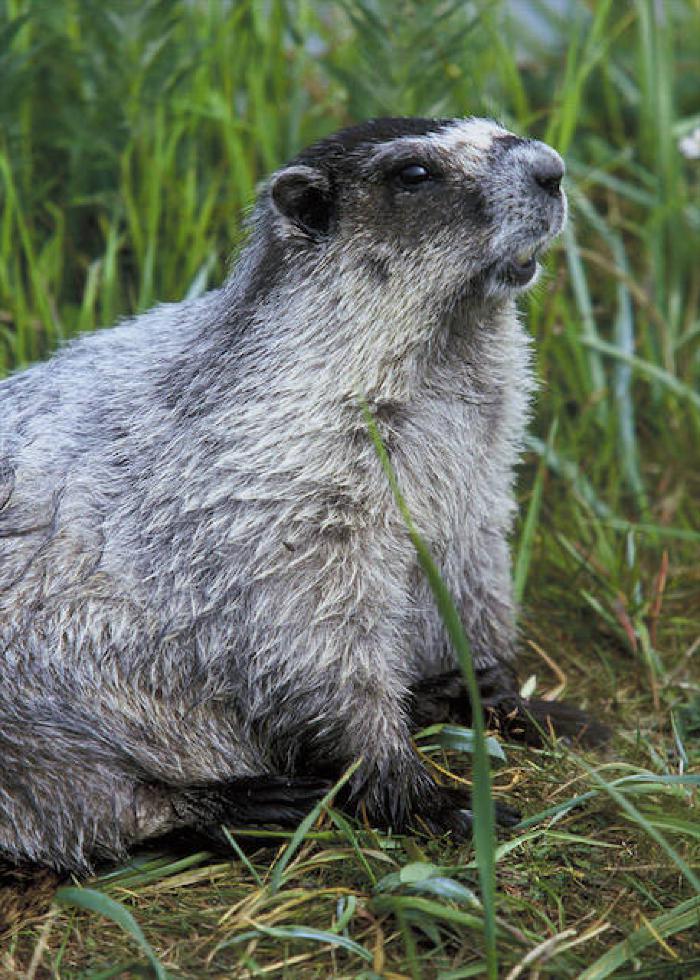Hoary Marmot — Quiriq

The Alutiiq word for marmot may come from quili- a root word meaning fat. This is an apt description. Hoary marmots are the largest member of the squirrel family. These plump mammals can weigh over ten pounds and eat heartily during the summer to fatten up for a long period of winter hibernation. They are also stout, with a round body and short legs.
There are three varieties of marmots in Alaska – the Alaska Marmot (Marmota boweri) found north of the Yukon River, the Woodchuck (Marmota monax), found in eastern interior Alaska, and the hoary marmot (Marmota caligata) found south of the Yukon River. The hoary marmot’s range includes portions of the Alutiiq homeland, but not the Kodiak Archipelago.
On the mainland Alutiiq people hunted marmots for food, hides, and their teeth. Marmot pelts were traded to Kodiak for use in clothing and marmot incisors obtained for carving. Knives for fine carving featured a marmot or porcupine tooth bit set perpendicular to the length of a wooden handle. Carvers used the tooth to gouge out pieces of wood and shape their creations. Wooden artifacts from a village in Karluk provide examples of both the marmot tooth knives and the long narrow gouge marks they left in carvings.
If Marmots are not indigenous to Kodiak, why is there a Marmot Island and a Marmot Bay? This name comes from a translation error. Members of the 1790 Billing Expedition identified the island as Yevrashka, a Russian word meaning ground squirrel. Later, English speakers mistakenly interpreted this word as marmot.
